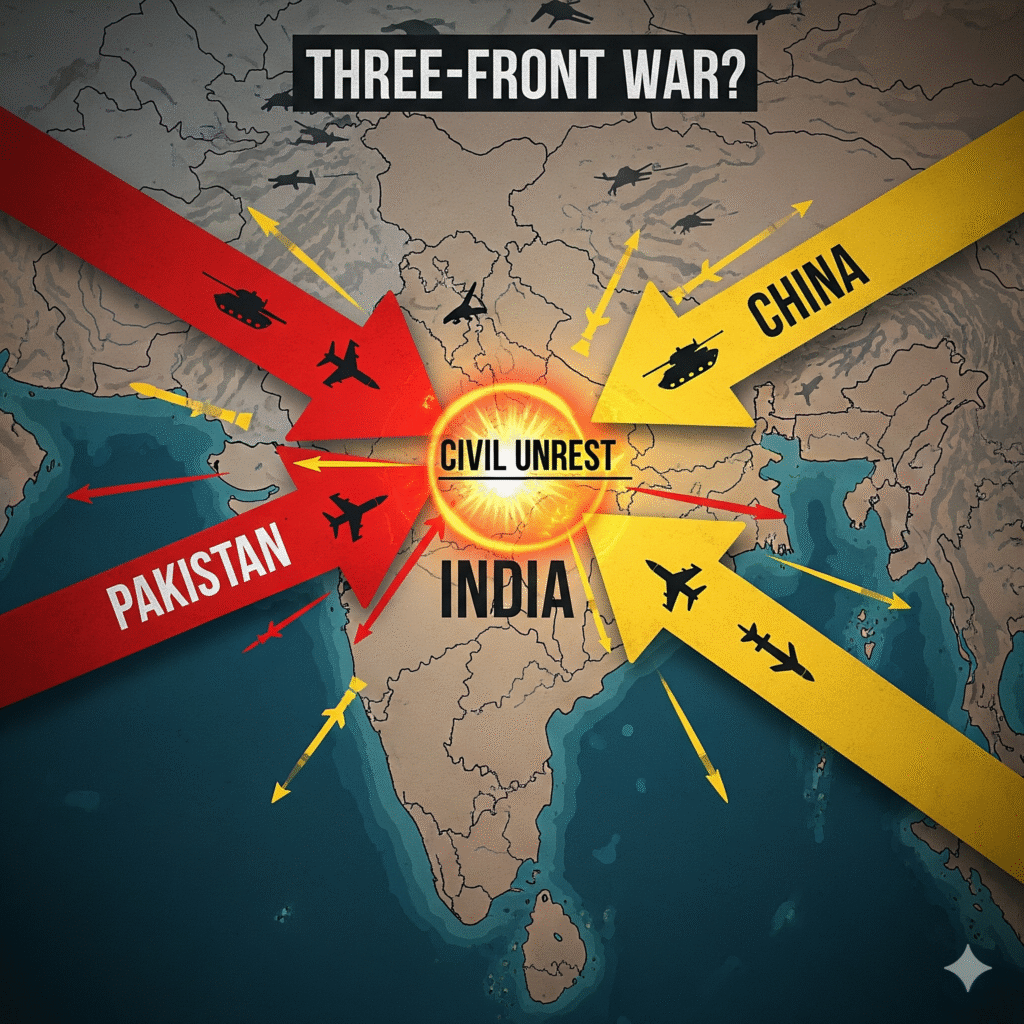The idea of a three-front war has often been used as a strategic buzzword in Indian military circles, invoking both fear and fascination. It poses the ultimate test of India’s hard power: what happens if conflict simultaneously breaks out with Pakistan in the west, China in the north and east, and insurgency or proxy turmoil within? While some dismiss this as alarmist imagination, the reality cannot be entirely ruled out. This is where the debate gets interesting—between theoretical possibility and practical challenges.
The Strategic Nightmare
India’s geography places it between two nuclear-armed adversaries—China and Pakistan—who are increasingly aligned under strategic convenience. Add the possibility of internal unrest in the Northeast or militancy in J&K, and the outline of a three-front challenge becomes clear. On paper, this looks catastrophic. But the question remains: Can India handle a multi-front confrontation?
This is not a rhetorical question. It lies at the heart of India’s modern military planning. Policy documents and think-tank debates highlight indigenous defence manufacturing, rapid mobility, cyber resilience, and integrated command networks—all geared toward preventing simultaneous front pressures.
The Difference Between Theory and Reality
Theoretical View
A combined Pakistan–China offensive could mean large-scale war on multiple terrains alongside hybrid attacks within India. The nightmare depicts India stretched thin across deserts, mountains, and cyber domains.
Realistic View
Perfect synchronization between Beijing and Islamabad is unlikely. Each has independent calculations and risk factors. For both to escalate simultaneously would require high political coordination. India, meanwhile, has managed internal unrest and hybrid warfare without collapsing its military bandwidth.
The real challenge is ensuring no adversary finds India weak enough to exploit two fronts in tandem.
Why It Still Matters
History proves wars often emerge from “improbable” scenarios. The Kargil conflict was once considered unlikely. In today’s Indo-Pacific order, with China’s assertiveness and Pakistan’s volatility, even a partial two-and-a-half-front situation demands deterrence. India must refine:
- Force readiness via Integrated Battle Groups (IBGs)
- Technology-driven dominance in surveillance, cyber, and space
- Diplomatic buffers to prevent simultaneous escalations
- Hard power recalibration through missile and air defence programs
A Wargame in the Making?
The three-front hypothesis is less prediction, more wargame—a stress test for vulnerabilities and joint operations. What makes it relevant is the recognition that India’s maturity will be judged not by fighting one war, but by preparing for multiple shades of conflict simultaneously.
The Takeaway
A three-front war is both a phantom and a warning. The phantom reminds us adversary coordination is unlikely. The warning insists India cannot be complacent. The challenge lies in building flexible, resilient, and high-tech power projection that deters simultaneous threats. The true debate, therefore, is not whether India will face a three-front war—but whether India’s preparedness will keep it theoretical.
For deeper insights on India’s modernization, explore our analysis on India’s submarine programs and next-gen fighter jets.


